Lisselane
Houses within 15km of this house
Displaying 159 houses.
Houses within 15km of Lisselane
Displaying 159 houses.
| House name | Description | |
|---|---|---|
| Warrensbrook | Richard Donovan was leasing this property to Daniel Donovan at the time of Griffith's Valuation, when it was valued at £14. There is still a house at this site, part of a large farm complex. |
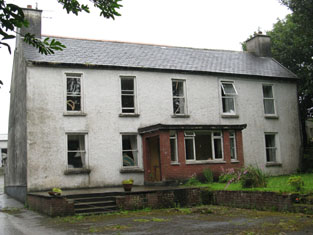
|
| Fort Prospect (Clonakilty) | Reverend Benjamin Swete was leasing this property to Richard Wheeler at the time of Griffith's Valuation, when it was valued at £15 15s. In 1837, Lewis notes it as the seat of R. Wheeler. It is still extant. | |
| Tullyland | This property was held in fee by the representatives of Messers. Cornwall at the time of Griffith's Valuation, when it was valued at £8. A house still exists at the site. |
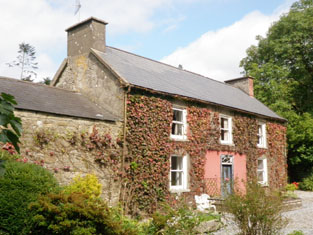
|
| Still View House (Cottage) | Robert Allman was leasing this property from the Earl of Shannon's estate at the time of Griffith's Valuation, when it was valued at £17 and had a mill adjacent. It is labelled Still View Cottage on the 1st edition Ordnance Survey map but an enlarged property at the site has become known as Still View House by the 1890s. A house still exists at the site. Allman was also leasing a mill, described as a flour mill on the 1st edition map. This site had expanded into an extensive woollen mill by the 1890s. Extensive industrial buildings still remain at the site. | |
| Distillery House | Richard Allman was leasing this property and the adjacent distillery from the Earl of Shannon's estate at the time of Griffith's Valuation. The properties were valued at £200. Distillery House is labelled on the 25-inch map of the 1890s. The distillery is labelled Allman's Distillery on the 1st edition Ordnance Survey map but as Bandon Distillery on the 25-inch edition of the 1890s. It is still extant and serves as a public house. |
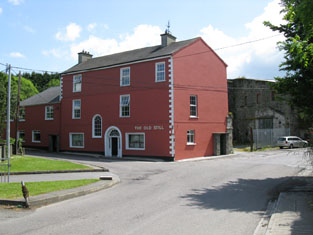
|
| Belleview (Bandon) | William Seymour was leasing this property from the Earl of Shannon's estate at the time of Griffith's Valuation, when it was valued at £14. A house still exists at this site. |

|
| Brookfield (Bandon) | Godfrey Baldwin was leasing this house from the representatives of Hugh Levinge at the time of Griffith's Valuation, when it was valued at £15. It is still extant though in need of refurbishment. |
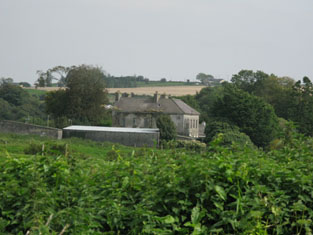
|
| Tullyland House | William Westropp and others were leasing this property to Nicholas Thomas at the time of Griffith's Valuation, when it was valued at £7 10s. There is still a house named as Tullyland House, at this site. | |
| The Cottage | A house built after the first Ordnance Survey. Thomas Gillman was leasing this property from George Wiseman at the time of Griffith's Valuation, when it was valued at £11 5s, It is still extant and known as Grove House. |

|
| Rock Castle Mill | John and James Gillman were leasing this property to John Hazel at the time of Griffith's Valuation, when it was valued at £8 and the mill at £52. In 1837 Lewis had noted it as the property of Mr. Heazle. It does not appear on the later 25" Ordnance Survey Map, suggesting perhaps, that it had ceased operations by the end of the nineteenth century. | |
| Lakemount House | Samuel Millner was leasing this property to Benjamin Millner at the time of Griffith's Valuation, when it was valued at £ 6 10s. In 1814 Leet notes Lakemount as the seat of George Beamish. There is still a house at this site. |

|
| Kilcaskan Castle | At the time of Griffith's Valuation, William O'Neill Daunt held this property in fee when it was valued at £32. In 1837 Lewis notes that it was held by Daunt and describes it as " a handsome castellated mansion". Both Taylor and Skinner and Wilson refer to it as a seat of the Daunt family in the 1780s. In 1894 Slater referred to it as the seat of Achilles Daunt. In 1906 it was also owned by Achilles Daunt and valued at £12 10s. The Irish Tourist Association Survey of 1944 referred to it as the residence of Miss M.O'Neill-Daunt. It is still extant. |

|
| Knockaneady | John Beamish was leasing this property to John Schofield at the time of Griffith's Valuation, when it was valued at £6. It does not appear on the later 25-inch Ordnance Survey map of the 1890s. | |
| Ballymoney Glebe House | At the time of Griffith's Valuation, Reverend Robert Meade was leasing this property from the Trinity College estates when it was valued at £23. A slightly different building is labelled "Rectory" on the 25-inch Ordnance Survey map of the 1890s. It is still extent and in use. |
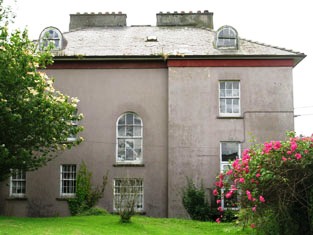
|
| Phale Court | At the time of Griffith's Valuation, Standish Smithwick was leasing this property from William Stanley, when it was valued at almost £8. It is recorded as Phale House on the 1st edition OS Map and as Phale Court on the later 25 inch Map. In 1837, Lewis refers to Phale House as the seat of E.H. Good. In 1914 it was occupied by the Hosford family. In 1786 Wilson refers to it as the seat of John Wade. It is also associated with the Deasy family. |
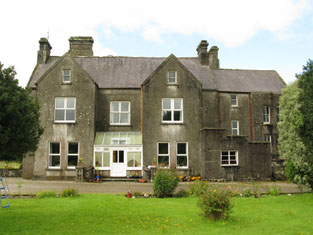
|
| Mount Beamish | John Beamish was leasing this property to Rev. John Baldwin at the time of Griffith's Valuation, when it was valued at £15. In 1837 Lewis records it as the seat of J. Beamish. Leet noted it as the seat of Rev. Samuel Beamish in 1814. Farm buildings exist at the site now. | |
| Drombofinny House | Benjamin Daunt was leasing this property from the Devonshire estate at the time of Griffith's Valuation, when it was valued at almost £8. It is labelled Drombofinny House on the 25-inch Ordnance Survey map of the 1890s. A house still exists at the site. | |
| Kilmoylerane House | Richard J. Long was leasing this property from the Devonshire estate at the time of Griffith's Valuation, when it was valued at £15. A house and extensive farm buildings exist at the site. | |
| Roseville | At the time of Griffith's Valuation, Henry Beamish was leasing this property to Bernard Beamish, when it was valued at £16. Henry Beamish was also the owner of a flour mill [W381539] in the same townland, leased to William Norwood, and valued at £150. The mills do not appear on the 25-inch Ordnance Survey map of the 1890s. Roseville is still extant. | |
| Kilrush House | Thomas Beamish held this property in fee at the time of Griffith's Valuation, when it was valued at £24. Lewis records it as the seat of A. Poole in 1837. The National Inventory of Architectural Heritage records that an earlier house, built around 1650, originally stood at this site and the extant house may incorporate parts of that earlier structure. |

|
| Lisbehagh | Sampson Beamish was leasing this property to John Donovan at the time of Griffith's Valuation, when it was valued at £8. | |
| Church Hill House | At the time of Griffith's Valuation, Rev. Mountifort Longfield was leasing this property from Susan McDonnell, when it was valued at £24. [This may be Susan McDaniel of Bandon, as Daniel McDaniel of Knockmacool, is listed in a Bandon Directory of 1876]. Lewis records the house as the seat of Mountifort Longfield in 1837. It is still extant. |

|
| Knockmacool House | Mrs Susan McDonnell [McDaniel] held this property in fee at the time of Griffith's Valuation, when it was valued at £11 10s. It is labelled Desert Cottage on the 1st edition Ordnance Survey map and Knockmacool House on the later 25-inch edition. An Encumbered Estates Sale notice of May 1851 indicates she had previously held it from the Warren estate. A house is still extant at the site. | |
| Kill House | Richard J. Long was leasing Kill House from the Attley [?] estate at the time of Griffith's Valuation, when it was valued at £8. There is still a house at the site. | |
| Inchydoney House | At the time of Griffith's Valuation, Thomas Hungerford was leasing this property from the Ecclesiastical Commissioners when it was valued at £22. Described by Lewis as "Island House" and the seat of T. Hungerford in 1837. In 1906 it was owned by Mary Sandes Hungerforde and valued at £31 15s. The house is now used as a religious retreat centre. |

|
| Youghals House | A Miss Walsh was leasing this property from the Earl of Shannon's estate at the time of Griffith's Valuation, when it was valued at £14. This house is still extant. |

|
| The Retreat (Island) | Richard Beamish was leasing this property from Winspur Toye at the time of Griffith's Valuation, when it was valued at £20. A house is still extant at the site. | |
| Kilbrittain Castle | William Stawell held this property in fee at the time of Griffith's Valuation, when it was valued at £70. The original castle dates from the 15th century but the property was extensively re-modelled in the eighteenth and nineteenth centuries by the Stawell family. Lewis records it as the seat of Mrs. Stawell in 1837. In 1906 it was the property of Col. William Stawell and valued at £182. It was partially damaged by fire in 1920 following its occupation by British force during the War of Independence. In 1942 the Irish Tourist Association Survey recorded a detailed history of the castle and its association with the Stawell family. In recent years some of the building has been restored. |

|
| Kilbrittain Lodge or Ivy Lodge | Rev. Francis Stawell was leasing this property from William Stawell at the time of Griffith's Valuation, when it was valued at £18 and a nearby mill was valued at £26. It is labelled Kilbrittain Lodge on the 1st edition Ordnance Map but Ivy Lodge on the later 25-inch edition. In 1837 Lewis refers to Mill House as the seat of Rev. F. Stawell. The house is still extant and occupied and in 2009 was offered for sale. It is frequently known as the Dower House in the local area. |

|
| Riverdale House | John Heard was leasing this property from the Stawell estate at the time of Griffith's Valuation, when it was valued at £10. In 1837, Lewis refers to Riversdale as the seat of T. Bailey. It is still extant and occupied. |

|
| Kilgarriff House | Henry Bence-Jones, a distinguished physican and scientist, was leasing this property from Rev. Henry Stewart, at the time of Griffith's Valuation, when it was valued at £24 10s. In 1837, Lewis refers to it as the seat of Capt. Davis. A house still exists at the site. | |
| Bushmount | Not visible on the 1st edition Ordnance Survey map but named as Bushmount on the 25-inch edition of the 1890s. Johanna Deasy was leasing this property from the Earl of Shannon's estate at the time of Griffith's Valuation, when it was valued at £22 10s. The Deasy family were brewers in the town of Clonakilty. [Now the site of St. Paul's Nursing Home.] | |
| Fern Hill | AT the time of Griffith's Valuation, this property was being leased from the Earl of Shannon's estate by Anna Atkins. It was then valued at £28. In 1837, Lewis refers to it as the seat of W.F. Atlkin. Now part of the Fernhill House hotel complex. |

|
| Lower Tawnies Cottage | Rev. Henry Stewart was leasing this property from the Earl of Shannon's estate at the time of Griffith's Valuation, when it was valued at £13 15s. Lewis notes it as the seat of the Rev. Dr. Stewart in 1837. It is still extant but unoccupied. |

|
| Millville | Thomas and James Allen were leasing this property from the Earl of Shannon's estate at the time of Griffith's Valuation, when it was valued at £15 and the adjacent mills at £37. The house is still extant. Modern housing now occupies the site of the mill. | |
| Scartagh Cottage | Tradition locally suggests Scartagh Cottage was originally the property of the Townsend family. By the time of Griffith's Valuation, it was being leased by Henry Galway to Matthew O'Hea. Various members of the Galway family held small amounts of land in the area while Matthew O'Hea, of the War Office, London, is recorded as the owner of 70 acres in county Cork in the 1870s. Scartagh Cottage has been replaced by a convent on the 25-inch Ordnance Map towards the end of the nineteenth century and that building is still extant. | |
| Ahalisky | William Bence-Jones held this property in fee at the time of Griffith's Valuation when it was valued at £14. A plant nursery is identified at this location on the 1st edition Ordnance Survey map. Extensive farm buildings occupy the site now. | |
| Kilmaloda House | Thomas Beamish held this property in fee at the time of Griffith's Valuation, when it was valued at £50. In 1837, Lewis refers to it as the seat of Sampson Beamish. In 1906 it was owned by Sampson Beamish and valued at £68 15s. Local sources suggest it was built by the earlier Sampson Beamish and occupied by his descendents until the mid twentieth century when it came into the hands of the McCarthy-Murrough family. It is still extant and occupied. In 2013 it was offered for sale. |

|
| Beaumont | William Wright was leasing this property from Rev. Thomas Beamish at the time of Griffith's Valuation, when it was valued at £10 10s. Built after the 1st edition Ordnance Survey map opposite the site of a diocesan school. In 1814, however, Leet noted Beaumount as the seat of William Beamish. Mrs. Susan Beamish, of Beaumont, Clonakilty, was the owner of over 1300 acres in county Cork in the 1870s. This house is no longer extant. | |
| Mill House (Ballinascarty) | William G. Harris was leasing this property to Charles Connell at the time of Griffith's Valuation, when it was valued at £7 15s and the adjacent mill valued at £41. It is labelled Mill House on the 25-inch Ordnance Survey map of the 1890s, though the corn mills are labelled disused at that time. A house is still extant at the site though the mills are now ruinous. | |
| Skeaf House | Herbert Gillman was leasing this property from William Austin at the time of Griffith's Valuation, when it was valued at £20 15s. Lewis recorded it as the seat of W. Austin in 1837. Together with other Austen property it was offered for sale in the Encumbered Estates Court in June 1851. In the 1870s it was the residence of John E. O'Sullivan though it was offered for sale by him in the Landed Estates Court in April 1880 when it was described as "a fine residence". A house still exists at the site. |
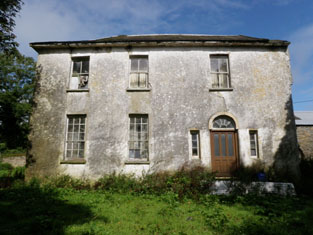
|
| Kilnagross | At the time of Griffith's Valuation, William Sullivan was leasing this property to Rev. Somerset Townsend, when it was valued at almost £12. In 1837, it was the seat of Rev. W. Sullivan. It is no longer extant. | |
| Shannonvale House & Mill | At the time of Griffith's Valuation, the Misses Newman were leasing this property to T. & J. Allen, The house was valued at £25 and the mill at £225. Lewis records it as the seat of T. Allin in 1837. The mills afterwards became the property of the Bennett family and later of the Rank company and continued in business until 1963. The house is still extant. In 1786 Wilson refers to a house in this area as "Mount-Shannon, the seat of Dr. Calnan". |
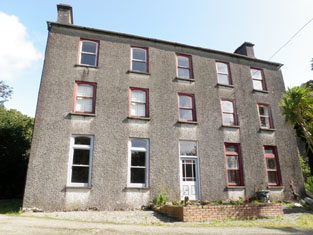
|
| Ardnacrow House | Though buildings existed at this site in the 1830s Ardnacrow House is only labelled on the later 25-inch Ordnance Survey map of the 1890s. At the time of Griffith's Valuation, Winthrop Sealy held this property in fee when it was valued at £29. The original house is now ruined and a modern house has been constructed nearby. | |
| Gortahorna House | Mrs. Eliza Sealy held this property in fee at the time of Griffith's Valuation when it was valued at £32. Lewis notes it as the seat of J.M. Sealy in 1837. In 1906 it was owned by John Hungerford Sealy when buildings were valued at £8. . A nearby flour mills, named Barleyfield Mills, [W508485], was leased to William Sullivan and valued at £13. In 1942 the Irish Tourist Association Survey noted that it had bee rebuilt after being burnt but by the 1940s the roof had been removed "and the slates used for housing schemes". The house is now a ruin. The mill continued to be worked until the mid-twentieth century and the building is still extant. |
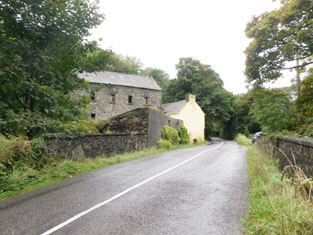
|
| Burren House | Richard Sealy was leasing this property to Mrs. Hestor Sealy at the time of Griffith's Valuation, when it was valued at £13 10s. In 1906 it was owned by the representatives of Ludlow Sealy and valued at £21 10s. According to the current owners, Burren House was built on the site of a McCarthy Castle in the 1790s. It has now been completely restored. See www.burrenhouse.net. |
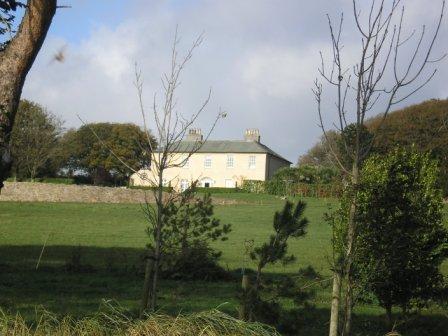
|
| Maryborough | Miss Jane Clerke was leasing this property from Thomas Beggs [Biggs] at the time of Griffith's Valuation, when it was valued at £14. It is likely that this is the same as Thomas Biggs of Dunmanway. In 1837, Lewis had noted the house as the seat of Maj. Broderick. The house appears to have been replaced by a modern building but the remains of the large walled garden are still extant, enclosing large modern farm sheds. | |
| Gortaglanna House | At the time of Griffith's Valuation, Hibernicus Scott senior was leasing this property to Hibernicus Scott, junior, when it was valued at £34 10s. Lewis records it as the seat of Maj. M. Scott in 1837. It is still extant and occupied. |
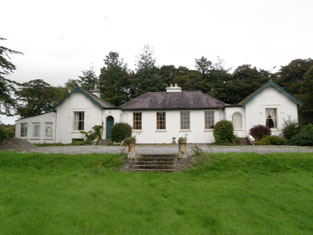
|
| Glenville | Richard Robinson was leasing this property to Nicholas Bowen at the time of Griffith's Valuation, when it was valued at £11. In 1837, Lewis noted it as the seat of R.B. Robinson. It is now a farm guesthouse. |
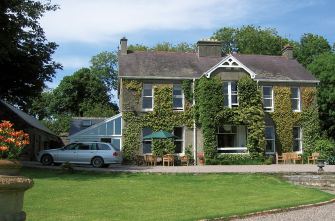
|
| Harbour View | John Bowen was leasing this property from William Stawell at the time of Griffith's Valuation, when it was valued at £6. This may be the property known as Harbour View which is still extant. | |
| Seaview Cottage | At the time of Griffith's Valuation, John Bowen was leasing this property to William Bernard, when it was valued at £16. Lewis notes in 1837 that Mr. Bowen had built this and several other houses in the locality as bathing lodges. Leet mentions Seaview as the seat of John Powell in 1814. Seaview is now a stud farm. | |
| Glanduff (Kilbrittain) | William Stawell held this property in fee at the time of Griffith's Valuation, when it was valued at almost £9. There is no trace of a building at the site now. | |
| Flaxfort House or Seaview House | At the time of Griffith's Valuation, William Scott was leasing this propert to Rev. Robert Taylor, when it was valued at almost £10. Lewis records it as the residence of Rev. Robert Taylor, PP, in 1837. It is labelled Seaview House on the 1st edition Ordnance Survey Map but it had become known as Flaxfort House soon after. | |
| Coolmain Castle | Thomas Wyse was leasing this property to Hibernicus Scott at the time of Griffith's Valuation, when it was valued at £18. In 1837, Lewis records it as the seat of E. Stowell. In 1814, however, it was the seat of Hib. Scott. The Honourable Henry Boyle Bernard, third son of the 2nd Earl of Bandon, lived here in the 1870s when he owned over a thousand acres in county Cork. Both Walford (1885) and Slater (1894) record him as the owner. In 1942 the Irish Tourist Association Survey noted that the building was becoming derelict. It had recently been the home of the novelist Donn Byrne, who had been involved in a fatal motor accident. Coolmain castle is still extant and now the property of the Disney family. |

|
| Currarane | John Tresilian was leasing this property from the Earl of Bandon's estate at the time of Griffith's Valuation, when it was valued at £7. In 1814, Leet noted it as the seat of John Howe. A house is still extant at the site. | |
| Garranereagh House | Sidney Howe was leasing this property to Catherine Stawell as the time of Griffith's Valuation, when it was valued at £9. A house is still extant at this site. | |
| Casino House | At the time of Griffith's Valuation, Eliza Sealy was leasing this property to Sidney Howe, when it was valued at almost £7. Casino House is now a gourmet restaurant. See www.casinohouse.ie. |
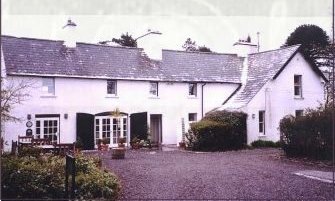
|
| Castle View Mill House | At the time of Griffith's Valuation, Francis Bennett was leasing this property to James Hayes. It was valued at £13 10s and the ajacent mill had a valuation of £56. In 1837, Lewis noted it as the seat of J. Hayes. The mill buildings are still extant at this site. |

|
| Sea View (East Carbery) | Howard Wiseman was leasing this property to William Merrick at the time of Griffith's Valuation, when it was valued at £10 10s. It is still extant and occupied. |

|
| Coolwood House | John Kingston was leasing this property from the Earl of Shannon's estate at the time of Griffith's Valuation, when it was valued at £8. It is not labelled on the 1st edition Ordnance Survey map but appears on the later 25-inch map as Coolwood House. It is still extant and occupied. | |
| Castle Bernard | Described by Lewis in 1837 as " a stately mansion, built in 1806, adjacent to the site of the former castle" and originally known as Castle Mahon. It was the seat of the Bernard family in the late 1770s and 1780s and then known as Castlebernard. Occupied by Viscount Bernard at the time of Griffith's Valuation and valued at £120. It was burnt in June 1921 and is now a ruin adjacent to Bandon Golf Club. |

|
| Castle Freke | At the time of Griffith's Valuation, it was held in fee by Lady Carbery and valued at £90. In 1906 it was held by the trustees of Lord Carbery and valued at £136 . The existing building at Castlefreke was constructed at the end of the eighteenth century, replacing an earlier castle which had belonged to the Barry family, the original owners of the estate. It was modified in the late nineteenth century but subsequently gutted by fire in 1910 and restored by 1913. It was sold by John, 10th Lord Carbery, after WWI. In the early 1940s the Irish Tourist Association survey reported that it was unoccupied but in good repair and owned by the Land Commission. Castlefreke fell into ruin throughout the twentieth century but a portion of it has since been restored |
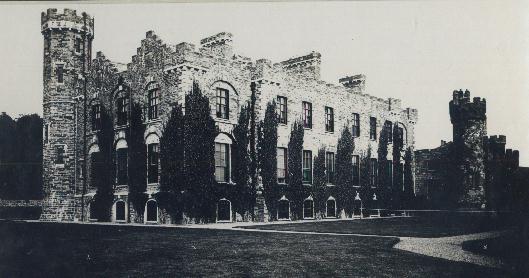
|
| Mahon Abbey House | James Harton was leasing this property from "the ladies Boyle" at the time of Griffith's Valuation, when it was valued at £12 5s. It is still extant and occupied. |
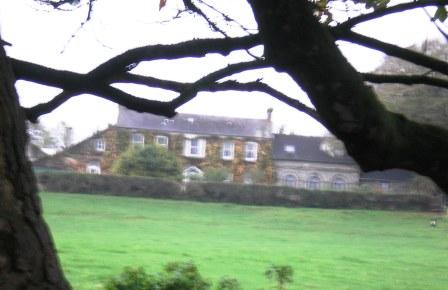
|
| Lislevane Cottage | Lislevane Cottage was being leased by Alexander Deane from "the ladies Boyle" at the time of Griffith's Valuation, when it was valued at £9. There is a large farm at the site now with a house possibly dating from the early twentieth century. |

|
| Spital Mill House | William Harris was leasing Spital Mill and its house to Charles Connell at the time of Griffith's Valuation, when the whole complex was valued at over £50. The mill buildings are labelled "in ruins" on the 25-inch map, published in the 1890s. A modern industrial complex is now located close to the site. | |
| Balteenbrack | Rev. Patrick Sheehy was leasing this property from the representatives of Henry Galway at the time of Griffith's Valuation, when it was valued at £10. There is still an extant house at the site. | |
| Ballyva House | Ballyva house was being leased by James Hugh Smith-Barry to James R. Deane at the time of Griffith's Valuation when it was valued at £16. Lewis refers to it as the seat of M. Galway in 1837. A house is still extant at the site. | |
| Muckruss House | Henry B. Beamish was occupying Muckruss House at the time of Griffith's Valuation when it seems to have been jointly owned by him and Thomas Hungerford. It was valued at £14 10s at the time. In 1906 it was owned by William Beamish and valued at £12 10s. It is still extant. A later house, known as Dunmore House (W397379), appears on the 1890s 25-inch Ordnance Survey Map. There is a hotel and golf course in this area now. | |
| Dunowen | Dunowen House was being leased jointly by the Bandon and Smith-Barry estates to George Sandes at the time of Griffith's Valuation, when it was valued at £19. In 2009 it was offered for sale. |

|
| Ballyduvane House | Ballyduvane House was held in fee by Mrs. Eliza Beecher at the time of Griffith's Valuation, when it was valued at £25 10s. Lewis refers to it as the seat of M. Becher in 1837. There is still an extant house at the site. | |
| Ballyduvane | Edward Herrick was leasing this property from Mrs. Eliza Beecher at the time of Griffith's Valuation, when it was valued at £12 5s. Lewis refers to it as the seat of E, Herrick in 1837. In 1814 Leet noted it as the residence of Thomas Herrick. Referred to by Slater as the seat of M.A.R. Beecher in 1894. There is still a house at the site. | |
| Springmount or Carhoo House | At the time of Griffith's Valuation, William Beamish was leasing this property from the Earl of Bandon's estate, when it was valued at £11 10s. On the 25-inch map, published in the 1890s, it is labelled Carhoo House. A house and farm buildings are still extant at the site. | |
| Ballyvackey House | Ballyvackey House was held in fee by Mrs. Ellen Alleyn at the time of Griffith's Valuation, when it was valued at £11. In the late 1770s and 1780s it was occupied by the Allen family. It is not shown on the 25-inch Ordnance Survey map of the 1890 and is no longer extant. | |
| Camus House | George Hungerford was leasing Camus House from the Smith-Barry estate at the time of Griffith's Valuation, when it was valued at £19. It does not appear on the 6-inch Ordnance Survey map but is labelled Camus House on the 25-inch map of the 1890s. There is still a house at this site. | |
| Sunmount | George Beamish was leasing Sunmount to Rev. W. John Day at the time of Griffith's Valuation, when it was valued at £20 5s. Lewis refers to Ballyvackey as the seat of G. Beamish in 1837. In 1906 it was owned by William Hungerford and valued at £23. It is no longer extant. | |
| Greenfield House | The representatives of Henry Galway were leasing this property from Mrs. Honoria O'Hea at the time of Griffith's Valuation, when it was valued at £20. Lewis refers to it as the seat of Henry Galway in 1837. He also refers to "Green Park" in the parish of Creagh as the seat of John Gallway. In 1894 Slater refers to the house as the seat of Denis McCarthy Gallway. Greenfield House is no longer extant. | |
| Ballincurrig | Mrs. Susan Woodbourne was leasing this property from "the Ladies Boyle" at the time of Griffith's Valuation, when it was valued at £13. There is still a house at this site. | |
| Court Macsherry | An earlier house had existed in the grounds of the present building. The "Ladies Boyle" held Court Macsherry House in fee at the time of Griffith's Valuation, when it was valued at £30. The building seems to have become the Esplanade Hotel by the time the 25-inch map was published in the 1890s. The Irish Tourist Association survey of the 1940s refers to it as the "beautiful demesne and summerhouse of the Earl of Shannon, now reconstructed as the Esplanade Hotel". This building continues today as the Courtmacsherry Hotel (www.courtmacsherryhotel.ie). |

|
| Kincraigie (Woodview) | Woodview was being leased by the Ladies Boyle to William B. Leslie at the time of Griffith's Valuation, when it was valued at £19 15s. Lewis refers to the seat of J. Leslie in Courtmacsherry in 1837. The property later bacame Kincraigie where William lived with his wife, Jane Florence McCartie, the widow of Horace Townsend. Jane's son, also Horace, owned the house until the early twentieth century. Later the home of the Travers family. In the 1940s the Irish Tourist Association Survey refers to it as "once a magnificent mansion formerly the home of the Leslies, now almost deserted". At that time it was owned by a Mr. Barrett. It is now a ruin. | |
| Lislee House [Lisleetemple Glebe] | Rev. James Stewart was leasing this property from the Boyle estate at the time of Griffith's Valuation, when it was valued at £24 5s. Lewis refers to it as the seat of Rev.Stewart in 1837. It is still extant and now known as Lislee House. |
![Photo of Lislee House [Lisleetemple Glebe]](https://landedestates.ie/storage/img/orig/1508.jpg)
|
| Seacourt | Henry Longfield held this property in fee at the time of Griffith's Valuation, when it was valued at £21 5s. Lewis also refers to it as his seat in 1837. In 1906 it was owned by Mountifort Longfield and valued at £26 10s. It is still extant and was recently for sale see http://www.michaelhdaniels.com/ |

|
| Ballylangy House | Occupied by John Sealy at the time of Griffith's Valuation, on lease from the representatives of Thomas Sealy. The house was valued at £16 at the time. I February 1890 Ballylangy was included in the sale of the estate of Dorothea Holmes. The sale notice includes a detailed description of the house at that time. A house still exists at this site. |
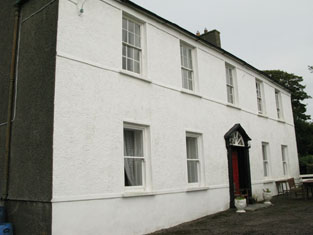
|
| Ballynamona House | John M. Travers was leasing this property together with over 135 acres to Thomas Beech in or at the time of Griffith's Valuation. A house is still extant at the site. | |
| Butlerstown House | Jonas Travers held Butlerstown House in fee at the time of Griffith's Valuation, when it was valued at £32. Lewis refers to it as the seat of J.Travers in 1837. The history of the house indicates that he had commissioned its building sometime in the early nineteenth century. It was still a Travers seat in 1894. See www.butlerstownhouse.com In 2009 it was for sale. |
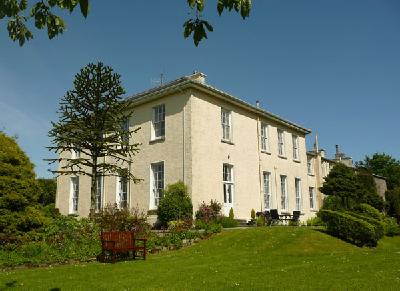
|
| Dunworley Cottage | William Hawke was leasing this property from Joseph Bennett at the time of Griffith's Valuation, when it was valued at £7 5s. It is still extant. | |
| Lissycrimeen House | Occupied by George Travers, leasing from Jonas Travers at the time of Griffith's valuation, when it was valued at £13 10s. Some old wall boundaries are the only physical evidence at the site. | |
| Rathbarry Vicarage/Rectory | Lady Carbery was leasing Rathbarry Vicarage to Rev. H. Stewart at the time of Griffith's Valuation, when it was valued at £20. Labelled as Rectory on the later 25-inch Ordnance Survey map, it is now known as Rathbarry House. |

|
| Milltown Place | Arthur Aylmer was leasing this property from Lady Carbery at the time of Griffith's Valuation, when it was valued at £17 5s. Aylmer was a younger son of the Aylmer, Donadea, county Kildare, family. His mother was Jane Evans-Freke, a daugher of the 1st Lord Carbery. He was later to succeed to the title of Baron Aylmer. By the 1890s the building at the site has been divided into a school and the Constabulary barracks. A smaller building exists at the site now. | |
| Kilkeran House | Kilkeran House was leased by Charles B. Baldwin to Anne Galway at the time of Griffith's Valuation, when it was valued at £16. Lewis refers to it as the seat of M. Galway in 1837. In 1814 Leet refers to it as the seat of Charles Connell. In the 1870s it was the residence of William Woods. A house still exists at this site. | |
| Ring Arundal | Jasper Lucas was leasing a house and extensive mill complex from the Smith-Barry estate at the time of Griffith's Valuation, when its combined value was £23. The mill is not present on the 25-inch Ordnance Survey map of the 1890s. The house is still extant. |

|
| Lackenduff House | Thomas Lucas was the owner of this property, unoccupied at the time of Griffith's Valuation, when it was valued at £15 10s. Lewis refers to Lackenduff House as the seat of J. Lucas in 1837. It is still extant and occupied. |
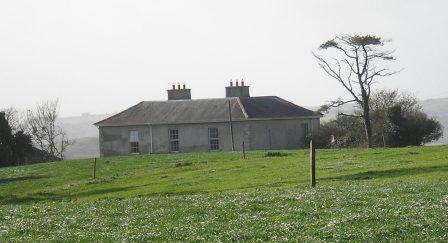
|
| Ring House | Ring House was being leased by Henry Austin to Henry B. Beamish at the time of Griffith's Valuation, when it was valued at £8 10s. There is still a house at the site. |

|
| Richfordstown House | Thomas Lucas was leasing this property from the Smith-Barry estate at the time of Griffith's Valuation, when it was valued at £26. It was the seat of Jasper Evans Lucas in 1814. In the 1870s John R. Lucas was the owner of the property. There is now a large farming enterprise here, as well as a house which may have replaced the earlier house. |

|
| Concamore House | James Nelson Crofts was leasing this property from Lady Carbery's estate at the time of Griffith's Valuation, when it was valued at almost £10. He was the fifth son of William Crofts of Velvetstown and was married to Dora, daughter of Jasper Lucas, of Richfordstown, Clonakilty. There is still an extant house at the site. | |
| Barryshall | Barryshall was held in fee by the Smith-Barry estate at the time of Griffith's Valuation, when it was valued at £15. In 1837, Lewis referred to it as the seat of J.Lucas. In 1894 Slater refers to it as the seat of George Lamb. In 1942 the Irish Tourist Association Survey stated that the house had been erected by the Barry family in the mid eighteenth century. Barryshall is still extant. |

|
| Timoleague House | In 1837 Lewis refers to Timoleague House as the seat of G. Travers. At the time of Griffith's Valuation, it was held in fee by Robert Travers and valued at £21. This house was burnt in December 1920 along with the ancient castle nearby. The Travers family built another house close by which is still extant and occupied. |
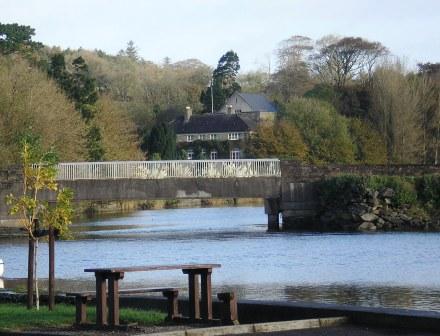
|
| Ummera | Robert Travers was leasing this property to Samuel McCaul at the time of Griffith's Valuation, when it was valued at £14. Lewis refers to it as the seat of Rev. B. Swete in 1837. In 1814 Leet notes Ummery as the seat of Rev. A. Sealy. Ummera House is still extant. |

|
| Lettercollum House | Lettercollum House was built by members of the Beamish family in the 1860s and occupied by them until the twentieth century. It served as a convent for the Sisters of Mercy and was later run as a guesthouse. It is now the focus of the Lettercollum Kitchen Project. |

|
| Palace Anne | Wilson, writing in 1786, refers to Palace Anne as the seat of Mr. Bernard. Both Leet in 1814 and Lewis in 1837 note Palace Anne as the residence of Arthur B. Bernard. It was held in fee by him in 1851 when it was valued at £30. Lewis describes it as " a stately mansion, beautifully situated". Bence Jones states that it was named in honour of Anne LePoer, wife of Arthur Bernard, who built the house in 1714. The house became dilapidated after the sale in the mid-nineteenth century and much of it has been demolished though one wing still survives. In 1944 the Irish Tourist Association Survey reported that it was then in a possession of Mr Warner who had refurbished this wing as a dwelling. The Survey provides a detailed description of the remainder of the property. |

|
| Roundhill | The house and demesne at Roundhill were offered for sale in the Encumbered Estates Court in 1855. The sale notice indicates that the property was being leased by the Bowens to the Earl of Bandon's estate. Leet refers to Roundhill as the residence of Rev. Kenny in 1814. The building is now in use as part of Bandon Grammer School. |

|
| Richmount | Richard Sealy held this property in perpetuity in the early 1850s when it was valued at £45.Lewis also notes it as his seat in 1837. It had been a residence of the Sealy family since the early eighteenth century. The site is now occupied by Bandon Grammer School. | |
| Clancool House | Held in fee by Thomas W. Hewitt at the time of Griffith's Valuation, when it was valued at £25. Lewis refers to Clancool as the seat of Mrs. Gillman in 1837. This house is still extant. |
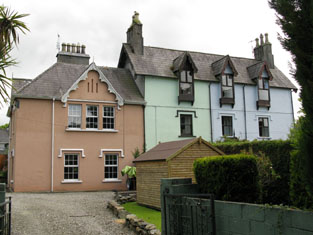
|
| Curravarahane House/Bernard Court | William Smith Bernard was leasing this property from the Bandon estate at the time of Griffith's Valuation, when it was valued at £42. Lewis notes the residence of W.S. Bernard, as The Farm, in 1837. It was labelled Bernard Court on the 25-inch Ordnance Survey map of the 1890s. It is still extant. |

|
| Gurteen Old Mill | Samuel Levis was leasing this property, including a mill, valued at £10, to John Crowley, at the time of Griffith's Valuation. Earlier, in 1786, Wilson refers to a property at Gurteen owned by Mr. Gilman. It is labelled Gurteen Old Mill on the first edition Ordnance Survey Map. It does not appear on the 25-inch Map of the 1890s and there is no trace of it now. | |
| Mayfield | In the 1770s and 1780s, Poole Esq was resident at Knocknaville near Bandon. Thomas Poole held Mayfield in perpetuity at the time of Griffith's Valuation, when it was valued at £48. Both Lewis, in 1837, and Leet, in 1814, also refer to it as his residence. Mayfield was burnt in June 1921 during the War of Independence when it was the residence of Hewitt R. Poole. It is now a ruin. |

|
| Hare Hill | At the time of Griffith's Valuation, Hare Hill was being leased by Thomas Beamish from the Poole estate, when it was valued at £20. Lewis notes it as the seat of J. Beamish in 1837. The National Inventory of Architectural Heritage notes that it was partially damaged by fire in the early 1920s but subsequently restored. |

|
| Sun Lodge/Hoe Lodge | Sun Lodge was being leased by James Hallinane from the Poole estate in the 1850s when it was valued at £13 10s. Lewis refers to it as the seat of W. McCarty in 1837. It is labelled Hoe Lodge on the 25-inch Ordnance Survey map of the 1890s, the name by which it is still known. |

|
| Mount Prospect (Bandon) | William Lane was leasing this property from the Allman estate at the time of Griffith's Valuation, when it was valued at £37. Lewis refers to Mount Prospect as the residence of Mrs. Bradshaw in 1837. A house still exists at this site. |
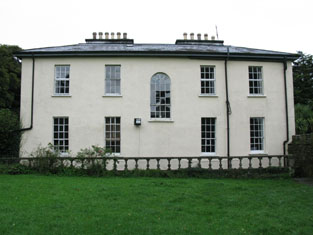
|
| Milton House (Bandon) | Elizabeth Swete was leasing Milltown from Miss McCarthy at the time of Griffith's Valuation, when it was valued at £22. It is labelled Miltown House on the 1st edition Ordnance Survey map but as Milton House on the 25-inch ediiton of the 1890s, the name by which it is still known. The National Inventory of Architectural Heritage suggests it was built for the Allman family. |
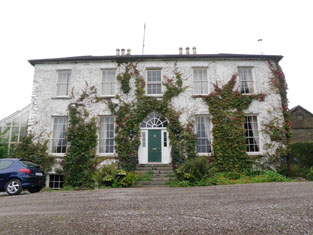
|
| Overton | Overton House was held by Miss McCarthy at the time of Griffith's Valuation, when it was valued at £32. Lewis notes it as the residence of Col. Clerke in 1837. it is a house principally associated with the Allman family. The adjacent cotton mill is described as "disused" on the 25-inch Ordnance Survey map of the 1890s. Both buildings are now in ruins. |

|
| Roundhill House | This house was the home of Travers Esq in the 1770s. The representatives of Robert Travers were leasing this property to Timothy Crowley at the time of Griffith's Valuation, when it was valued at £198 including the nearby mill complex. Both buildings are still extant. |
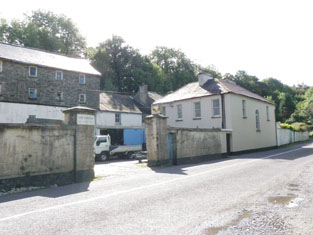
|
| Cashelmore House | In 1851 Thomas Beamish was leasing this property from Richard Longfield O'Connor when it was valued at £18. Lewis refers to it as the seat of J. Beamish in 1837. It was the residence of John Beamish in 1814. Buildings are still extant at the site. | |
| Kilcolman House | Held in fee by William Galway in 1851 when it had a valuation of £38. In 1837 Lewis identified it as the residence of Adderley Beamish, "beautifully situated on the banks of the river Bandon and surrounded by fine plantations". Capt. Beamish had fought in the Napoleonic campaigns at Talavera and Waterloo. He also had a house at Knaresborough in Yorkshire. Kilcolman was burnt in June 1921 during the War of Independence when it was the residence of the Longfield family. It is now a ruin. | |
| Kilhessan Lodge | James Jellett was leasing this house from the Poole estate in 1851 when it had a valuation of £13. A house is still extant at the site. | |
| Callatrim Retreat/Callatrim House | Held by Jacob Biggs from the Devonshire estate in 1851 when it had a valuation of £10. It is labelled Callatrim Retreat on the 1st edition Ordnance Survey map but as Callatrim House on the later 25-inch map of the 1890s. A house and extensive farm buildings are extant at the site. | |
| Mount Bernard | William Bernard was leasing this property from the Devonshire estate at the time of Griffith's Valuation, when it was valued at £15 10s. A house is still extant at this site. |

|
| Carhoon House | Thomas Bullen was leasing Carhoon from the Devonshire estate in 1851 when it was valued at £10 10s. It is still extant and part of a large farming enterprise but not occupied. |

|
| Coolfadda House | Alexander Swanston was leasing Coolfadda House from the Devonshire estate in 1851 when it had a valuation of £30. Lewis refers to it as the seat of B.Popham in 1837. A house still exists at the site. |

|
| The Retreat (River View House) | In 1851 Thomas K. Sullivan was leasing this property from the Devonshire estate when it had a valuation of £38. It is labeled Riverview House on the 1st-edition Ordnance Survey map but has changed to The Retreat by the 1890s. It is still extant. |

|
| Hill House (Bandon) | William C. Sullivan was leasing this house from the Devonshire estate in 1851 when it was valued at £20. It is labelled Barrett's Hill House on the 1st edition Ordnance Survey map but as Hill House on the 25-inch edition of the 1890s. It does not appear to be extant now. | |
| Kilbrogan Glebe | Held by Rev. Charles B. Bernard from the Ecclesiastical Commissioners in 1851 when it had a valuation of £34. It is still extant and now known as Mount Grellan House. |

|
| Park View (Bandon) | In 1851 Henry Cornwall held a property valued at £22 in perpetuity. It is also recorded as his residence by Lewis in 1837. By the publication of the 25-inch Ordnance Survey map of the 1890s it has become known as Ardnacarrig. It is still extant and occupied. |
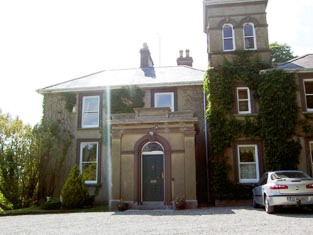
|
| Janeville (Bandon) | Rev. Henry Gillman was leasing this property from the Cornwall family in 1851 when it had a valuation of £33. It is labelled Janeville on both the 1st and 25-inch Ordnance Survey maps. The house is still extant and now known as Eversleigh House. |
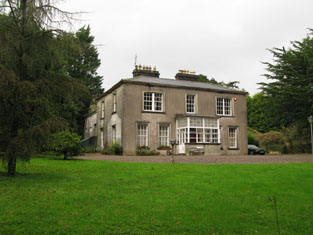
|
| Laragh House | In 1851 Edmund Murphy was leasing this property, then valued at £28, from the Devonshire estate. There was a mill adjacent. Lewis records it as the residence of I. Swanton in 1837. It is still extant and part of a large farming enterprise. |

|
| Mallowgaton | Leased by Robert Foulkes from the Devonshire estate in 1851 when it was valued at £11 10s. Labelled Mallowgaton on the 1st edition Ordnance Survey map and as Mallowgaton House on the 25-inch edition of the 1890s. It is still extant. | |
| Shinagh House | Leased by Thomas Banfield from the Devonshire estate in 1851 when it was valued at £18. Local sources suggest that the Banfields had resided there since at least the 1690s. This building is labelled Shinagh House on the 1st edition Ordnance Survey map but has disappeared by the 1890s when Shinagh House is shown some distance north-east of the original site at W457555. A business centre now occupies the site. | |
| Woodfort (Bandon) | John Ottley was leasing Woodford from the Alcock family in 1851 when it was valued at £25. It is still extant. | |
| Roughgrove | Leased by Benjamin Hosford from the Alcock estate at the time of Grifith's Valuation, when it was valued at £30. It was included in the sale of Hosford's estate in the Encumbered Estates Court in January 1851, when it was noted that it was "a handsome mansion house, occupied by John Ottley who had spent considerable sums on improvement". Both Lewis, in 1837, and Leet, in 1814, refer to it as the seat of Maskelyne Alcock. This is possibly also the property noted by Wilson in 1786 as Ballygarvy. It is no longer extant. | |
| Mawbeg House | Leased by Robert Popham from the Devonshire estate at the time of Griffith's Valuation, when it was valued at £10. A house still exists at the site. |

|
| Mawmore House | William Scott was leasing Mawmore from the Devonshire estate in 1851 when it had a valuation of £24. Lewis refers to is as the seat of S.B. Beamish in 1837. A house still exists at the site. |

|
| Killaneer House | Occupied by Francis Beamish in perpetuity at the time of Griffith's Valuation, when it was valued at £22. Leet refers to it as the seat of Thomas Gash in 1814. Buildings are still extant at the site. | |
| Farranhavane House | Leased by John Smith Wood from the representatives of Maskelyne Alcock in 1851 when it had a valuation of £10. It is still extant and part of a large farming enterprise. | |
| Enniskean Cottage or Mount Lodge | Noted by Lewis as the residence of Rev. W. Sherrard in 1837 and being leased by him from James Gillman in 1851 when it was valued at £12 10s. Later the residence of Orpen Beamish, MD. It is labelled Enniskean Cottage on the 1st edition Ordnance Survey map but as Mount Lodge on the 25-inch map of the 1890s. It is still extant. It was offered for sale in 2023. |
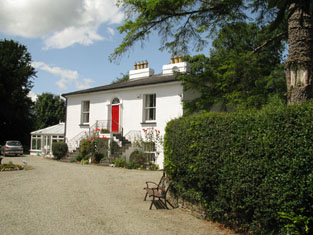
|
| Mary Ville (Kinneigh) | Leased by Joseph Hosford from the Devonshire estate at the time of Griffith's Valuation, when it was valued at £11 10s. | |
| Gardeville | Noted by Lewis in 1837 as the seat of Rev. W. Hall. Leased by Sarah Hosford from the Devonshire estate in 1851 when it was valued at £13. | |
| Carrigmore House (Kinneigh) | James Lysatt [Lysaght] held a property in fee here, valued at £46, at the time of Griffith's Valuation. Bence Jones states that it was built in 1842 by James Lysaght on the site of an earlier house known as Connorville, which had been purchased by Lysaght from the Connor family. In 1837 Lewis had referred to it as "the deserted and dilapidated mansion of the O'Connors." In 1783 Taylor and Skinner had indicated Connorsville as a seat of the Connor family as had Wilson in 1786. An adjacent smaller house, known as Laurel Hill, was held by Adderley Bernard in 1851. Carrigmore House and 312 acres, the estate of James Lysaght, were advertised for sale in July 1853. A lithograph of the house is included in the sale rental. Lyons indicates that the estate was sold privately to James L. Holmes. Carrigmore and Laurel Hill were offered for sale in the Landed Estates Court in 1876, as part of the sale of the Holmes estate. Donnelly states that it was burnt in October 1920 during the War of Independence when it was the property of James H. Morton. The house is now derelict. | |
| Fort Robert (Kinneigh) | Described by Lewis in I837 as a "handsome residence" then occupied by Mrs. [O'] Connor. In 1851 it was leased by George Fuller from Mary Longfield [O']Connor and valued at £18. By the mid 1860s it was in the possession of Thomas Kingston Sullivan. The sale rental of 1867 records that Fort Robert had been "allowed to get out of repair, but is beautifully situated". It appears to have become ruinous by 1890s. The Irish Tourist Association Survey of 1944 stated that the ruin was the property of Judge Henry Connor and also that the house had been associated with Art [O']Connor, United Irishman. | |
| Lakemount (Kinneigh) | John J. Baylis, MD, was leasing Lakemount from the Devonshire estate in 1851, when it was valued at £14. It is still extant and well-maintained. |

|
| Dromavane House | Leased by Thomas Wrenn from the Devonshire estate at the time of Griffith's Valuation, when it was valued at £9. It it still extant and occupied. |

|
| Palace Anne Mills | A substantial milling complex and house, leased to William Norwood by Arthur B. Bernard in 1851, when it was valued at £34. Lewis referred to the property as "an extensive flour mills" in1837. The property has been converted into apartments in the last decade. |

|
| Kilmeen Glebe (East Carbery) | Reverend Edward Alcock was leasing this property from the Ecclesiastical Commissioners in 1851 when it was valued at £23. Lewis notes that there were large plantations around the house in 1837, when it was the seat of Reverend E.H.Kenney. In 1944 the Irish Tourist Association Survey reported that it was then the residence of Rev. Gorman. Buildings are still extant at the site. | |
| Bennetts Grove | Leased by Francis Bennett to William Beazley at the time of Griffith's Valuation, when it was valued at £13 10s. Lewis refers to it as the seat of Herbert Gillman in 1837. In 1814 it was the seat of Francis Bennett. The original house seems to have been replaced by farm buildings. | |
| Caherconway House | Leased by Nicholas Cummins to Daniel Bechinor [or Buchinor] at the time of Griffith's Valuation, when it was valued at almost £8. | |
| Oak Mount (Kilmeen) | Held in fee by James Gillman at the time of Griffith's Valuation, when it was valued at £17 5s. Lewis referred to it as the seat of J. Gillman in 1837. In 1944 the Irish Tourist Association Survey refers to Oakmount as "a substantial farm dwelling". There is still an extant house at the site. | |
| Coolnaconarty House | Held in fee by Herbert Gillman at the time of Griffith's Valuation, when it was valued at £6. Not labelled on the 1st edition Ordnance Survey map but named Coolnaconarty House on the 25-inch map of the 1890s. It is no longer extant. | |
| Millfield House (Ross) | This house, with a mill valued at £40, was leased by William Limerick to Henry Morrow in 1851, when the house was valued at £12 5s. Lewis notes Millfield as the seat of Lieut. Lloyd, RN, in 1837 while it is noted by Leet as the residence of Roger Sweeny in 1814. The mill is labelled Ross Mill on the 25-inch map of the 1890s. There is still an extant house at the site as well as the remains of some mill buildings. | |
| Cahermore House | In 1851 Thomas Hungerford was leasing Cahermore House from the Bishop of Cork's estate,when it was valued at £32. It was owned by Henry Hungerford in 1906 and valued at over £44. Taylor and Skinner's map of 1783 as well as Wilson in 1786 also mention Cahermore as a Hungerford residence. In 1944 the Irish Tourist Association Survey noted that Cahermore had been burnt during the War of Independence and was then derelict. Donnelly indicates that it was burnt in June 1921. It is no longer extant. | |
| Burgatia House | Leased by Robert Starkey from the estate of the Bishop of Cork at the time of Griffith's Valuation when it was valued at £12. Donnelly indicates that this house was occupied by Thomas Kingston when it was burnt in February 1921 during the War of Independence. It is no longer extant. | |
| Milleen | Rev.William Jennings was leasing this property from the Hungerford estate at the time of Griffith's Valuation, when it was valued at £19 15s. In 1944 the Irish Tourist Association Survey lists Milleen among the houses in the area which had been burnt during the War of Independence and were then derelict. It is no longer extant. | |
| Creggane House | Creggane House was in the possession of John [Lichfield] at the time of Griffith's Valuation when it was valued at almost £9. It was leased to Robert Starkey at the time. A more substantial house is shown on the later 25-inch map of the 1890s. In 1885 Walford described Francis Evans Bennett as of "Creggane". A house is still extant at the site. | |
| Ross Abbey House (Rosscarbery) | Rev. John Hamilton was leasing this property from Elizabeth Jago at the time of Griffith's Valuation, when it was valued at £12. This house no longer exists. | |
| Manch | Held in fee by Daniel Connor at the time of Griffith's Valuation, when it was valued at £40. Lewis describes it as "an elegant villa four miles from the town, situated on a terrace, and surrounded with a highly cultivated demesne" in 1837. The Irish Tourist Association Survey of 1944 noted that it was then the residence of Circuit Court Judge Henry L. Connor. Bence Jone notes that the house was gutted by fire in 1963 but afterwards rebuilt. Still in the possession of the Conner family in the late 20th century. |

|
| Kincraigie | Willam Burton Leslie was leasing land and out-offices from the Ladies Boyle at the time of Griffith's Valuation. The property is labelled Woodview on the first edition Ordnance Survey map. The property later bacame Kincraigie where he lived with his wife, Jane Florence McCartie, the widow of Horace Townsend. Jane's son, also Horace, owned the house until the early twentieth century. Later the home of the Travers family and now a ruin. | |
| Sunville (Kilbrittain) | James F. Sweeney was leasing this property from William B. Bernard's estate at the time of Griffith's Valuation, when it was valued at £10. It included Knockavortelig Mill which does not appear on the 25-inch map of the 1890s. A house still exists at the site. | |
| Knockbrown | A property built after the 1st Ordnance Survey was published. It was held in fee by Thomas B. O'Callaghan in 1851 when it was valued at £8. There is still an extant house at the site. | |
| Cornwall's Brewery | Henry Cornwall held this property in perpetuity at the time of Griffith's Valuation when it was valued at £180. It is labelled Watergate Brewery on the 25-inch Ordnance Survey map of the 1890s. The former miller's house is still extant and now known as The Haven. |
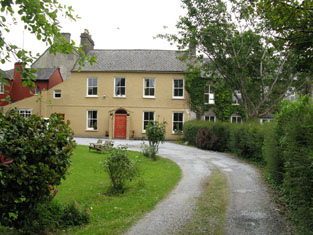
|
| Hill House (Bandon) | William C. Sullivan was leasing this house from the Devonshire estate in 1851 when it was valued at £20. It is labelled Barrett's Hill House on the 1st edition Ordnance Survey map but as Hill House on the 25-inch edition of the 1890s. It does not appear to be extant now. | |
| Summerhill (Bandon) | A house built after the publication of the first Ordnance Survey. At the time of Griffith's Valuation, Mrs. Eliza Baldwin was leasing a property at Knockbrogan from the representatives of J. Lovell. It was then valued at £8. Summerhill House is still extant. |
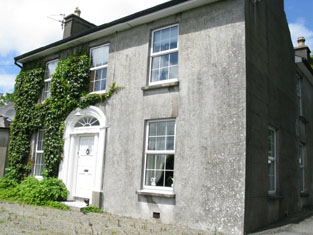
|
| Rossmore (Kilmeen) | At the time of Griffith's Valuation, Jeremiah Collins was leasing Rossmore from the superioress of the Presentation Convent in Cork. The house was valued at £13 at the time. In 1944 the Irish Tourist Association Survey referred to Rossmore as a "substantial farm dwelling", a description which is still valid. |

